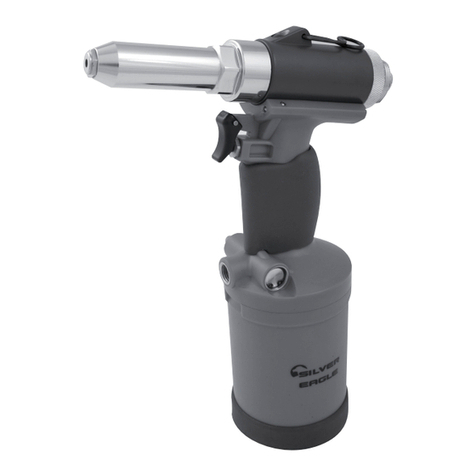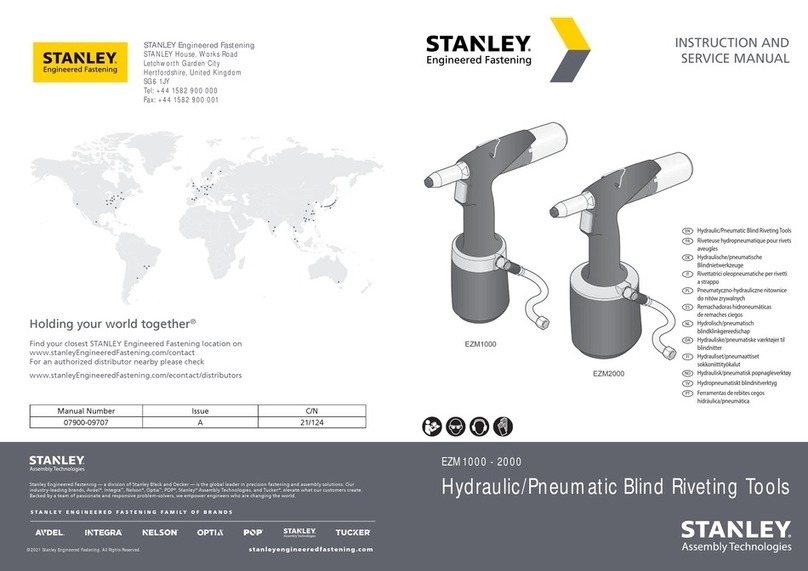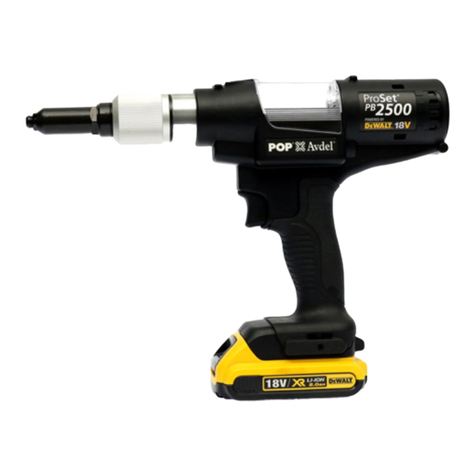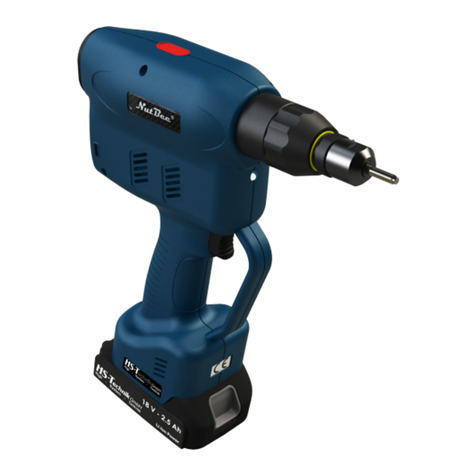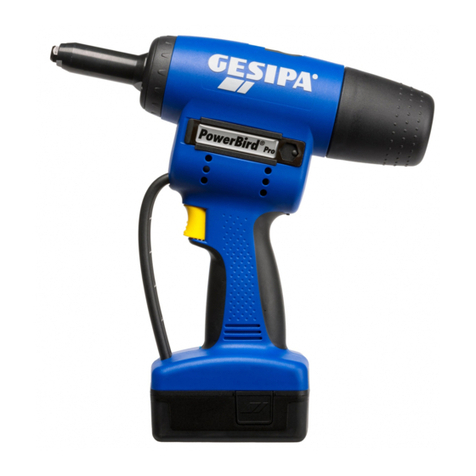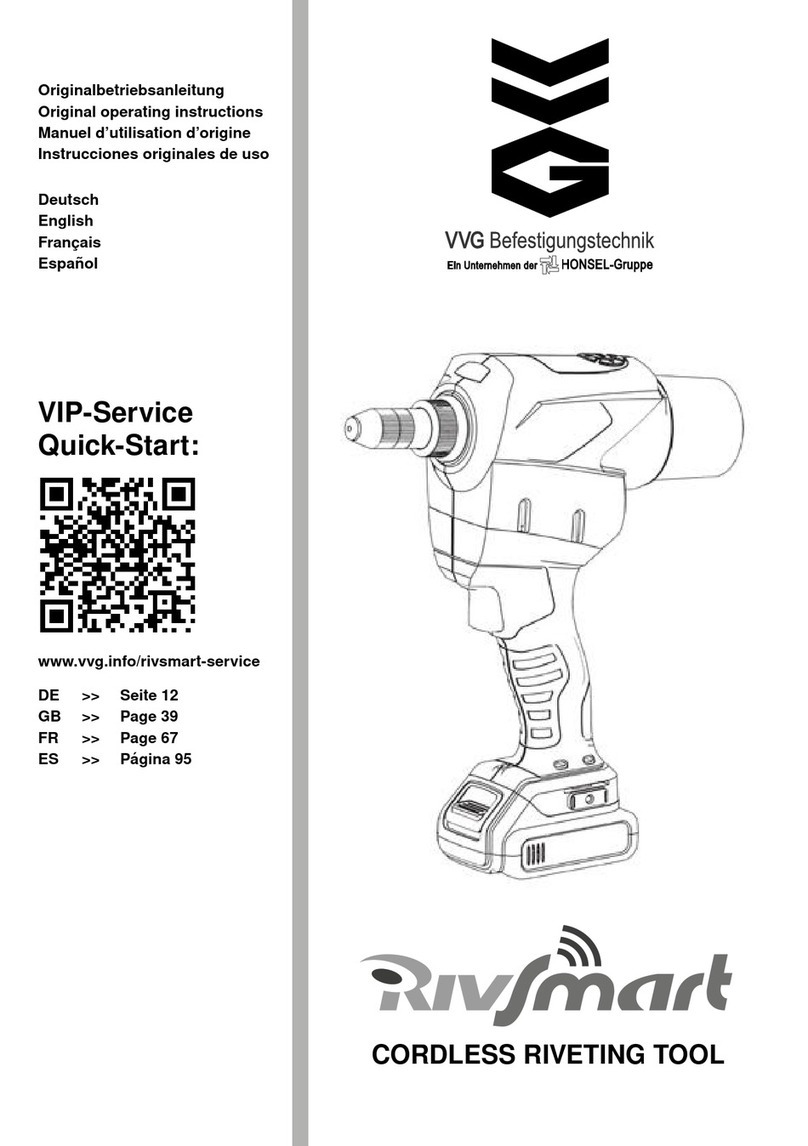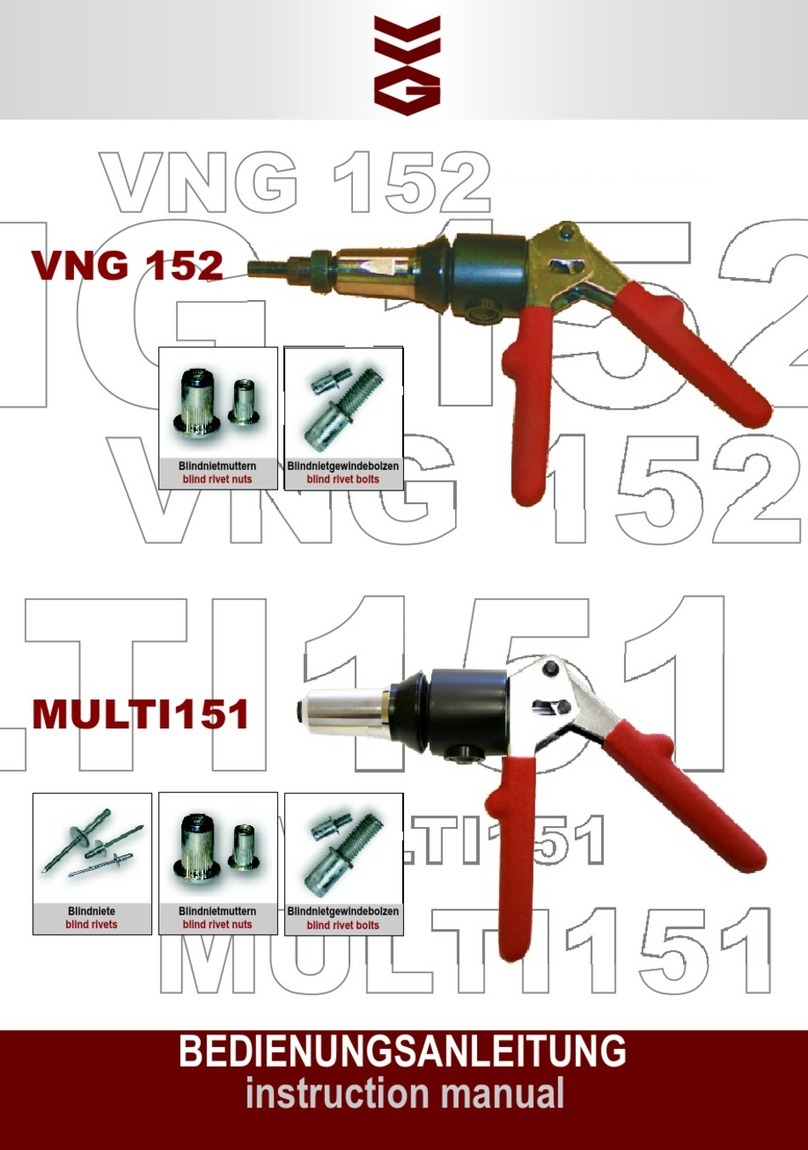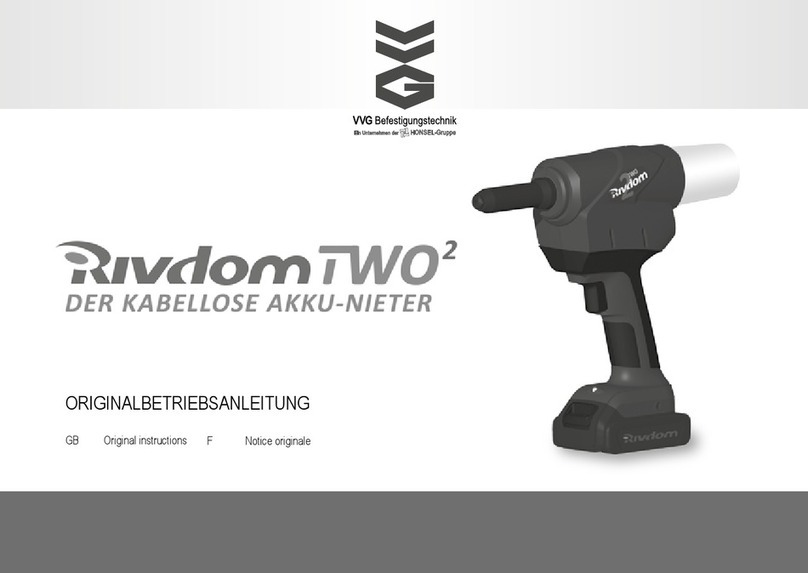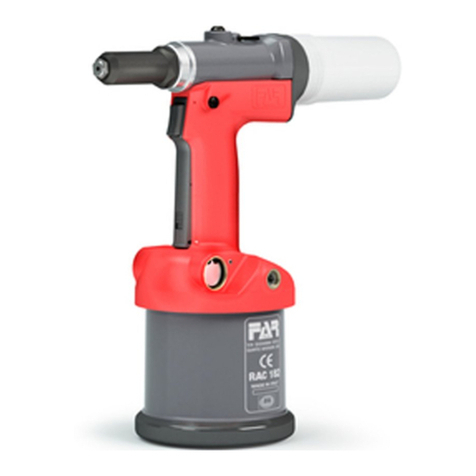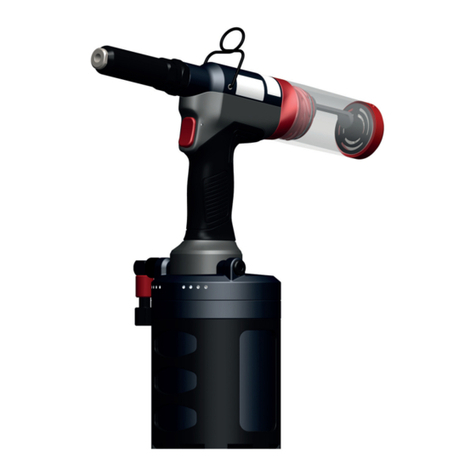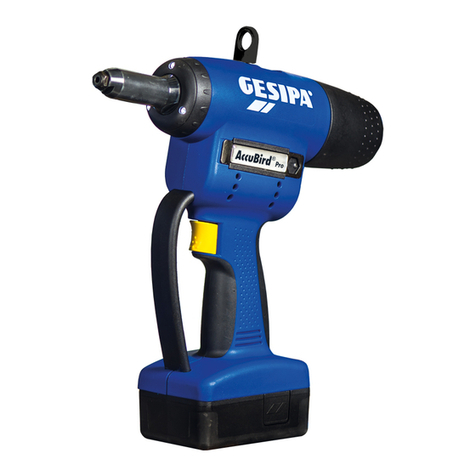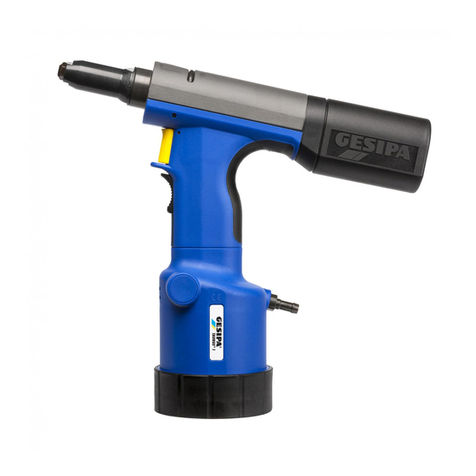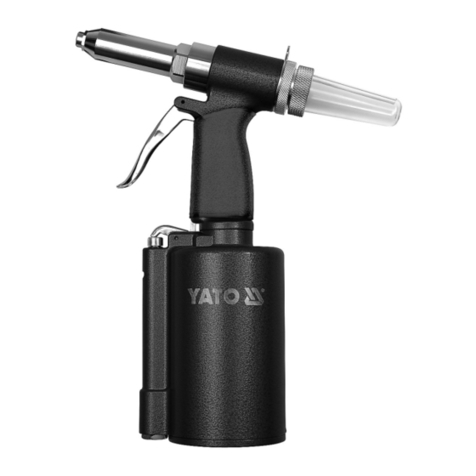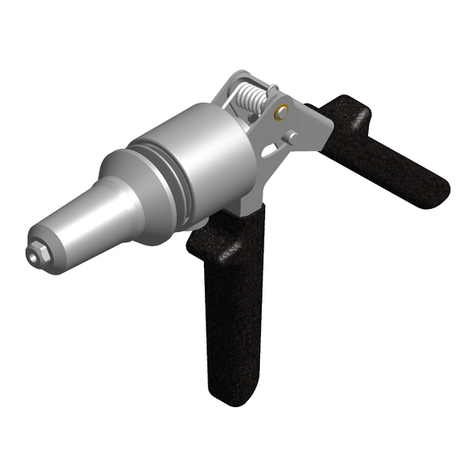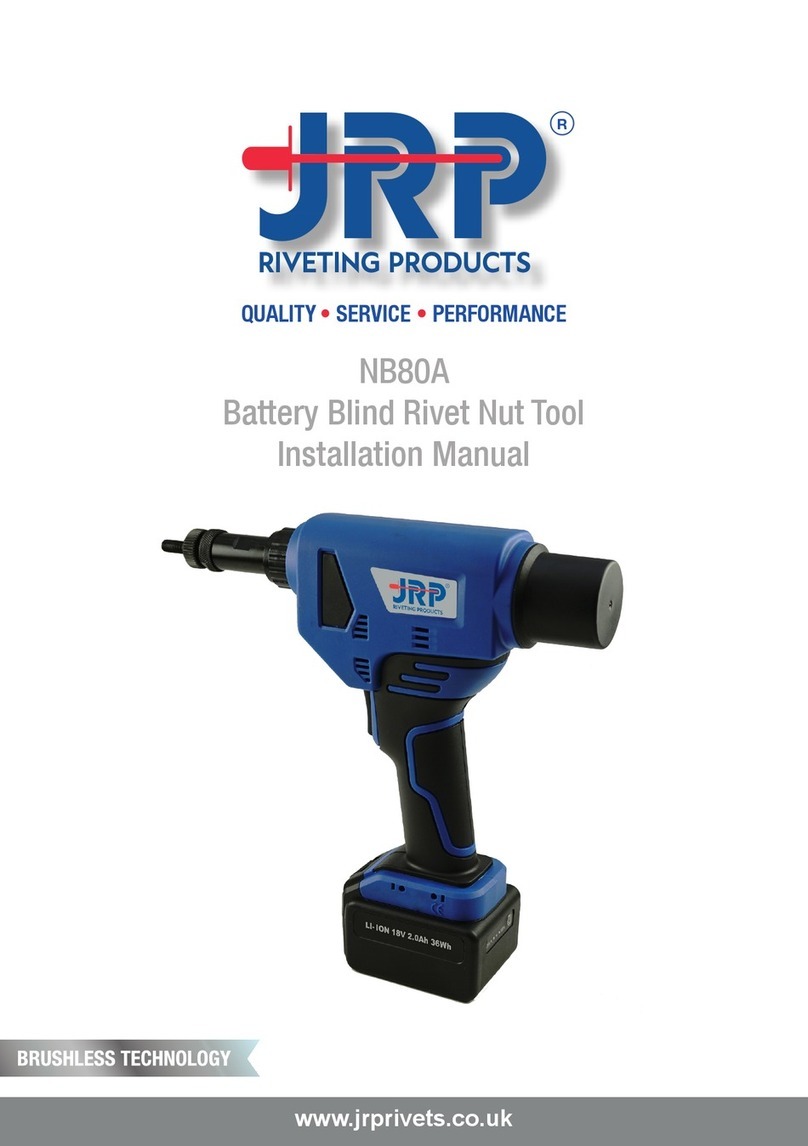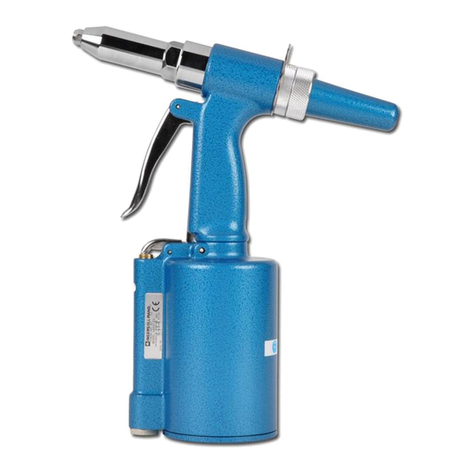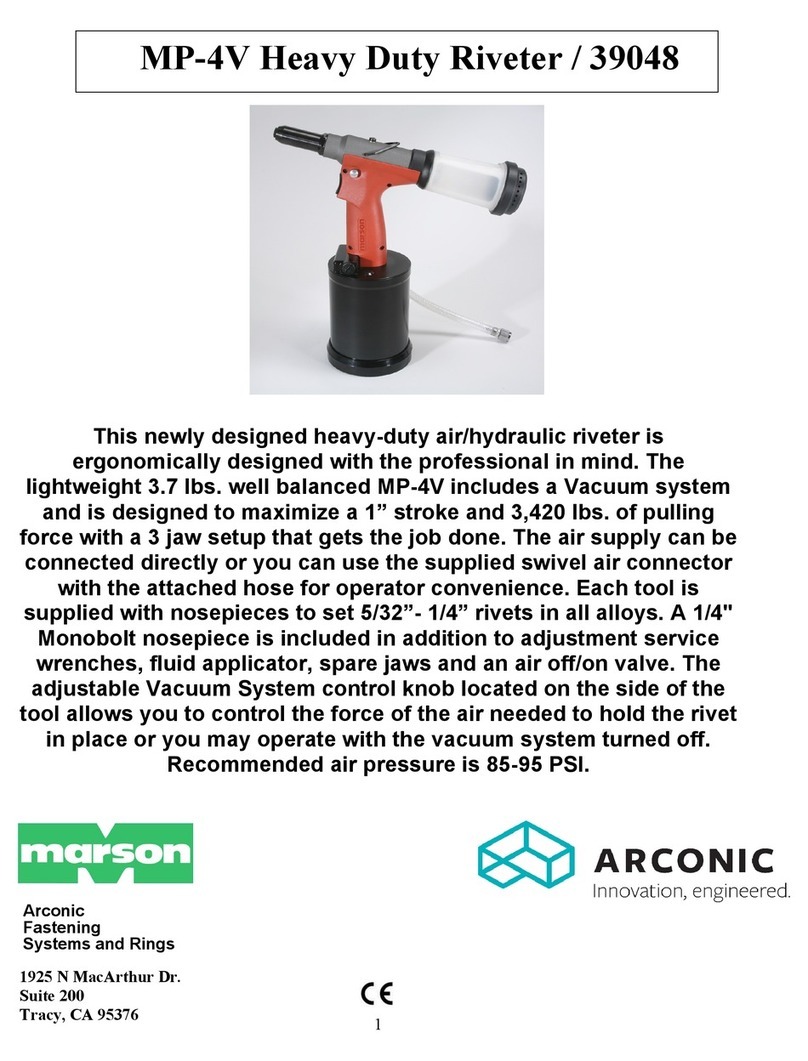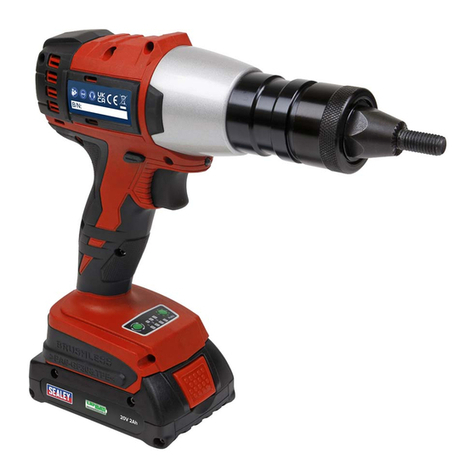
OPERATION AND HANDLING OF
THE BATTERY
Charge the batteries (F) only in chargers
recommended by the manufacturer.
There is a risk of fire if a charger
designed for a given type of battery is
used with other batteries.
Use only the specified batteries in the riveters. The
use of other batteries can lead to injuries and the
risk of fire.
Keep battery (F) not in use away from paper clips,
coins, keys, nails, screws or other small metal
objects that could cause bridging of the contacts. A
short circuit between the battery contact can cause
burns or a fire.
If improperly used or damaged, liquid can escape
from the battery (F).
Avoid contact with this liquid. In the event of acci-
dental contact, wash off with water. If the liquid gets
into the eyes, obtain additional medical assistance.
Escaping battery liquid can cause skin irritation or
burns.
SERVICE
Have your riveter repaired only by
qualified specialist personnel and only
with original spare parts. This will ensure
that the safety of the riveter is main-
tained.
COMMISSIONING
CHARGING THE BATTERY
Note: The battery (F) is partially charged on
delivery. In order to ensure the full performance of
the battery (F), charge the battery (F) completely in
the charger before the first use. Observe the notes
on the state of charge on the charger. The Li-Ion
battery (F) can be recharged at any time without
shortening its service life. Interruption of the charg-
ing cycle does not damage the battery (F). The
charger is equipped with a temperature monitoring
device that permits charging only in the tempera-
ture range between 0 °C and 40 °C.
PREPARING THE RIVETER – RIVDOM
ONE 16 V
Fit the mandrel collecting container (E) by turning
to the right. Push the battery (F) into the foot of the
riveter from the front and ensure that the battery
(F) is properly engaged. Press the trigger (I) and
hold it depressed. Fit the appropriate nose piece
(A) for the rivet you wish to set using the combi-
nation wrench supplied. After changing the nose
piece, release the trigger.
PREPARING THE RIVETER – RIVDOM
TWO 20 V AND TWO 2.8 20 V
Fit the stud collector by turning to the right. Push
the battery (F) into the foot of the riveter from the
front and ensure that the battery (F) is properly
engaged. Press the trigger for 5 seconds (until the
white LED on the tool starts to flash 1/sec) and
release again. The riveter remains in the rearmost
position. Fit the appropriate mouthpiece (A) for the
rivet you wish to set using the open-jaw wrench
supplied. After changing the mouthpiece, press
the trigger again briefly and the tool moves to its
starting position again.
WORKING WITH THE RIVETER
RIVETING
Insert the mandrel of the rivet into the nose piece
(A). Now insert the rivet into the parts to be riveted.
For a good riveting result, ensure that the parts and
the head of the rivet are resting on one another
without a gap. Press the trigger until the mandrel
is sheared. Hold the riveter so that the mandrel
collecting container is facing downwards to ensure
that the sheared mandrel drops into the mandrel
collecting container.
When working with cover cap, hold the riveter with
the nose piece (A) facing downwards after each
set rivet to ensure that the sheared mandrel drops
out of the riveter to the front. Do not use fixed or
retainer nose pieces together with the cover cap.
This would result in damage to the riveter!
EXTENDED TRIGGER FUNCTIONS (RIV-
DOM TWO 20 V AND TWO 2.8 20 V ONLY)
Rivdom TWO and TWO 2.8 have two further func-
tions that are controlled with the trigger.
1. Service position: Press the trigger for 5
seconds (until the white LED on the tool
English | 15
